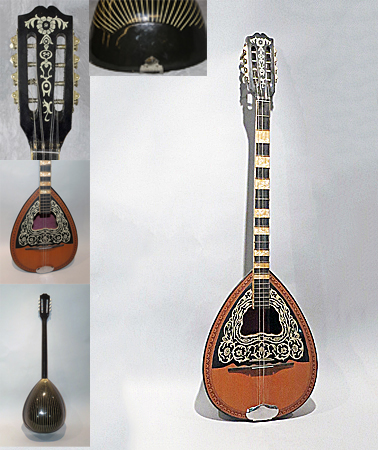
Owner: HWMC
Catalog#: 2CL-CHLT-050
Miscellaneous Lutes
Greek 'Bouzouki' (Tetrachord)
Greece
Unknown craftsman
Wood, mother-of-pearl, metal strings
Mid-Late 20th century
Length: 39.5 in, Width: 12 in, Depth: 6 in
Strings – Lutes – Miscellaneous Lutes
This bouzouki has 25 metal frets and 4 sets of double steel strings with a floral design on the body around the sound hole. It is a member of the long-neck plucked lute family. The fretboard is alternating ebony and mother of pearl. The main plucked string instrument in Greece is the bouzouki, which originally came from Turkey in the early 1910s. The Turkish word bozuk means “broken” or “modified.” The modern bouzouki has a lute, bowl-shaped body made from many narrow ribs glued together, with a guitar-like flat peghead, raised metal frets on the fingerboard, and a mandolin-like tailpiece.
There are two main types of bouzoukis: The trichordo (three-course with three pairs of strings), like the early baglama saz; and the tetrachord seen here (four-course with four pairs of strings), that was introduced in the 1950s by Manolis Chiotis. The bouzouki is played with a plectrum in the “syrtaki” dance style, which is often in 7/4 and 5/4 meter.
